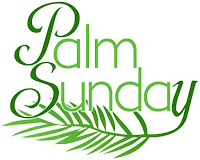 |
| Source |
The Passover Story
During the time of the Egyptian pharaohs, the Hebrews were held as slaves in Egypt. After generations of slavery, the Pharaoh a Hebrew baby came to be raised in the palace, spent part of his adult life in Midian with other Hebrew's who weren't slaves, and returned to Egypt to free the enslaved Hebrews. When the Pharaoh didn't release the Hebrews on command, the Hebrew god sent a plague that affected the Egyptians, but not the Hebrews. 10 plagues in all. (1. Water turned to blood, 2. frogs, 3. lice, 4. flies, 5. death of livestock, 6. boils, 7. hail, 8. locusts, 9. darkness, and 10. death of the first born.).
Just before the 10th plague, the Hebrews were directed to slaughter a male lamb 4 days before, brush the blood on their door frame, and make a special meal with the meat of the lamb. When the angel of death came to kill the fist born child of each family in Egypt, it "passed over" the homes with blood on the door frame, giving the holiday it's name.
After the 10th plague, the Pharaoh agreed to let his Hebrew slaves go free.
Just before the 10th plague, the Hebrews were directed to slaughter a male lamb 4 days before, brush the blood on their door frame, and make a special meal with the meat of the lamb. When the angel of death came to kill the fist born child of each family in Egypt, it "passed over" the homes with blood on the door frame, giving the holiday it's name.
After the 10th plague, the Pharaoh agreed to let his Hebrew slaves go free.
 |
| Source |
How Passover Is Celebrated
The central ritual of Passover is the Passover Seder. That is a ritual meal that is played out almost as if it's a play. It consists of symbolic foods and a script from the Haggadah. The celebration is primarily at home, but traditional Judaism prohibits working on the first and last days of the holiday. The community part of the holiday includes special services in the synagogue with readings, psalms, and the Yizkor service of remembrance is recited on the last day.
The most important of the symbolic foods is the matzah, a type of unleavened bread. Other symbolic foods are Karpas (green vegetable, usually parsley); Haroset (sweet fruit paste), the bitter herbs Maror (usually horseradish) and Hazeret (usually Romaine), Zeroa (shank bone), and Beitzah (egg). It's also common to have salt water or vinegar on the Sedar table.
Sources
- myjewishlearning on the Haggadah and Yizkor
- Judaism 101 page on Passover with part of the text and some of the music
- ReformJudaism.org page









